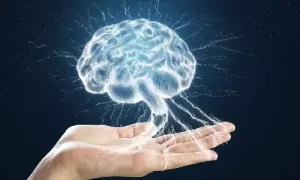
Dr. Ashish Shrivastav, Senior Consultant, Neurosurgeon, Dharamshila Narayana Superspeciality Hospital
The population in general has first hand knowledge of brain tumour from movies or serials,where the protagonist either dies in the end or comes out with successful surgery, with bald head and a large bandage, and happy ending prevails. Even in real life, large section of the society does not have adequate knowledge about brain tumours. There is a misconception that every tumour will either kill or result in coma with multiple problems, mental and physical. A mass awareness effort for the public is needed. A large majority of the brain tumours can be treated successfully.Most patients go back to their normal life. According to a study, central nervous system tumours’ incidence in India ranges from around 5 to 10 cases per 1,00,000 population. Although a severe disease, adequate knowledge and timely treatment can save many lives.
Not all tumours are cancerous:-
- Non cancerous tumours are called benign
- Cancerous tumours are called malignant.
Symptoms not to ignore:- The symptoms of a brain tumour depend on its location in the brain, because each part of the brain controls the specific functions in the body. The symptoms also depends on the rate of growth and the rapidity with which the pressure rises inside the brain.
Not all headaches are due to tum ours.
Features with suggest that the symptoms may be of a brain tumour.
- Severe headache not relived by common medicines.
- Headache with persisting or projectile vomiting
- Alterd sensorium or loss of consciousness.
- Unexplained confusion even in normal things
- Seizures or fitts in an adult.
- Blurring of vision
- Impaired hearing or abnormal sounds in the ear.
- Hormonal imbalance
- Sexual dysfunction
- Drastic behavioural changes
- Difficulty in balancing
What causes brain tumour:- Till date the cause for brain tumour is not establish though many theories are being persued. However this has not prevented increasingly successful treatment
Case study:-
Mr Mohammad Kalib Aden, 57 years old male, from Ethiopia was diagnosed to have a large left cerebellopontine angle tumour, pushing and compressing the brain stem severely. This had produced severe hydrocephalus (enlarged water compartment of brain) to compound the matters. The patient also has diabetes mellitus, hypertension, and polycythaemia with left lung disease due to chronic smoking . Extremely high haemoglobin and haematocrit (blood thickness) were corrected by letting out 4 units of blood in a phased manner. Heart and lung status was evaluated by cardiologist and chest specialist Surgery could not have been done without making the blood thin for fear of sludging of blood in the arteries causing possible infarction in the brain, heart, kidney, spleen and eyes.
His treatment was delayed/denied in his native country and some other centers due to the dangerous nature of the tumour and severe medical problems.
A 11 hours long microneurosurgery was conducted at Dharmshila Narayana Hospital by Dr Ashish Kumar Shrivastav And Dr Manish Garg. Almost 90% or more of the tumour was decompressed successfully, saving the brain stem and its blood vessels which were pressed and grossly distorted. Cranial nerves controlling hearing, facial movements and the swallowing were saved.He also required a right ventriculoperitoneal shunt for the hydrocephalus.To everybody’s relief, the patient withstood the procedure well and came out neurologically intact at the end of it.
The histopathological examination of the tumour revealed a hemangioblastoma, an uncommon tumour. Additional y a completely solid hemangioblastoma in the cerebellopontine angle is extremely rare, only few cases have been reported in the medical literature Fortunately for the patient, it is benign tumour. He should fare well in the long term.






